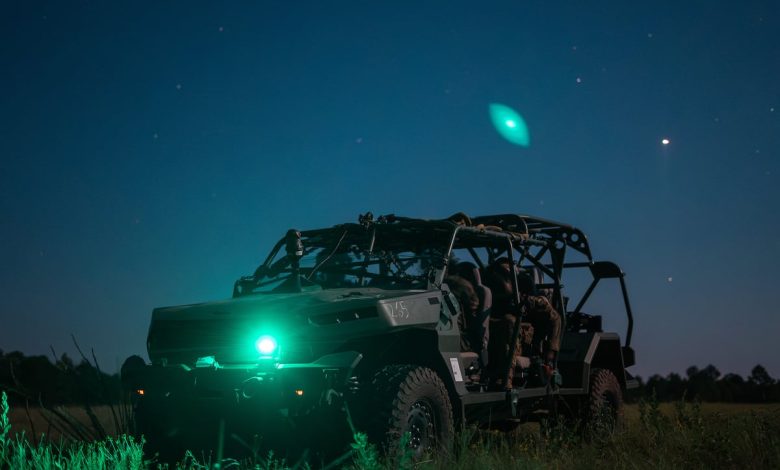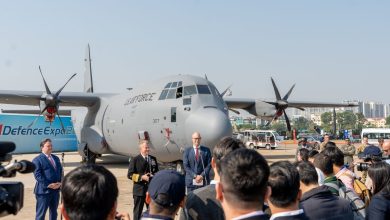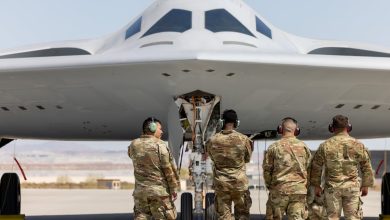Army picks 3 startups to fast-track self-driving squad vehicle

The U.S. Army is turning to commercial startups to fast-track autonomous ground vehicles into combat formations, awarding $15.5 million in new contracts to three companies to test self-driving systems on Infantry Squad Vehicles.
Overland AI, Forterra and Scout AI will “rapidly integrate and deliver commercial autonomous mobility into Army formations,” an Army statement published last week states. The companies are required to build prototypes as part of the “Unmanned Systems (UxS) Autonomy” program and get them to soldiers for demonstration and evaluation in May 2026.
“We are looking forward to seeing how our industry partner’s autonomy solutions perform on vehicles while performing relevant military missions,” Col. Ken Bernier, project manager for Future Battle Platforms within Program Executive Office Ground Combat Systems, said in the statement. “We remain committed to bringing the best technologies to our warfighters and shaping the future of autonomous mobility for our Army at an unprecedented speed.”
The Army has struggled to clear the hurdle to achieve fully-autonomous vehicles because of the inherent challenges on a modern battlefield not found on predictable roadways.
Following an off-road autonomy software assessment last year, Maj. Gen. Glenn Dean, who was in charge of PEO GCS at the time, told Defense News, “The good news is we are moving forward in that area. The bad news is industry is nowhere near where people think in terms of off-road autonomy. There’s a lot of development to do.”
Three companies — Forterra, Kodiak Robotics and Overland AI — were working with Army Futures Command’s cross-functional team focused on next-generation combat vehicles and PEO GCS on developing autonomy capability.
By that point, the evaluations for autonomous behavior hadn’t been truly off-road, Dean said.
“We’re talking trails and unimproved road conditions,” he said.0 “Building an autonomy algorithm that can identify the entire range of things it might encounter is challenging because you have a pretty big data set.”
The service last year was focused on choosing a platform, and then integrating a wide variety of capabilities into the system including autonomy. However, as part of the Army’s new push to transform itself, it canceled its plans to purchase robotic combat vehicles and is pivoting to focus more deeply on achieving autonomous capabilities that could work on a wide variety of platforms.
RELATED
The choice to integrate autonomy on the ISV comes at a time when the service is also planning to dramatically scale up its buys of the GM Defense-built vehicle, which it sees as a more flexible platform for more mobile combat units.
The Army is shifting away from buying Humvees and the Joint Light Tactical Vehicle in order to grow the ISV fleet.
The Army’s autonomy push mirrors the Pentagon’s larger effort to harness commercial startups, with ground vehicles serving as one of the most immediate test beds for adapting civilian self-driving advances to military operations.
Even so, some of the work feeding into the program is born out of efforts made internally to the Defense Department.
Overland AI, for example, is applying its work spun out of the Defense Advanced Research Projects Agency’s RACER program focused on high-speed, off-road autonomy. The effort came in response to the lack of attention being given to technology development outside of the commercial on-road, self-driving world, Stephanie Bonk, the company’s co-founder and president, told Defense News.
“There was really the time before the DARPA RACER program and then the time after,” Bonk said. “Prior to that, there really was no focus on navigating through unstructured terrain. Now we’re tackling environments where you can’t rely on GPS, you can’t rely on maps, and you can’t rely on good comms. These were things we had to solve as part of the problem.”
The program, according to Bonk, is not about just fielding “a reliable and robust” autonomy capability, but “really is about delivering a real operational capability. A major focus of this program is integrating with soldiers and I think that’s something we’re incredibly excited about.”
Jen Judson is an award-winning journalist covering land warfare for Defense News. She has also worked for Politico and Inside Defense. She holds a Master of Science degree in journalism from Boston University and a Bachelor of Arts degree from Kenyon College.
Read the full article here









